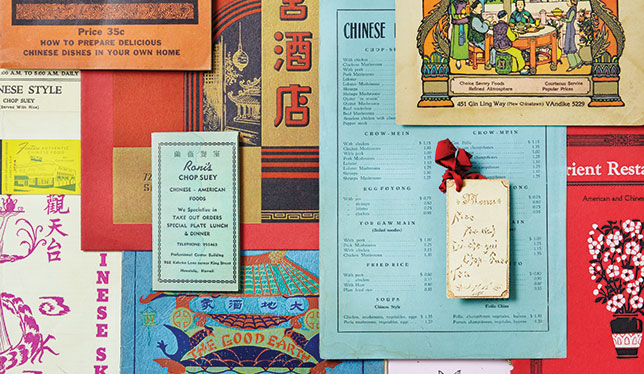
There are more Chinese restaurants in the world than all fast-food restaurants combined. Their ubiquity makes the 10,000-plus Chinese menu collection recently acquired by University of Toronto Scarborough especially important, says Daniel Bender, a history professor at the campus and director of its Culinaria Research Centre. “This collection is a reminder to all of us that we should be thinking [about] and looking at today’s restaurants in different ways. The menu is not just a piece of paper, but a representation of a dream,” says Dr. Bender.
The collection, which filled 50 boxes when it was shipped to the UTSC library, was bought by the university for $40,000 from New York City collector Harley Spiller. The collection also includes chopsticks, postcards, takeout boxes and other ephemera from around the world and spanning more than a century – the earliest menu in the collection is from 1896. After the collection is fully processed and digitized, Dr. Bender says it will be made available online. He also hopes to have a public exhibition on campus of some of the items.
Mr. Spiller, known for his eclectic collections, researched the prospective home for his collection before agreeing to the sale. “He spent his whole life building this collection and he wanted the right stewards for it, the right connections to the surrounding community, so he came up and visited the university,” says Dr. Bender.
There is much to be gained from such an impressive collection, says Dr. Bender. Food scholars can use it to understand the history of Chinese food in North America, including how it was adapted to local tastes. “For example, how do different ingredients come in? Broccoli is not indigenous to China, yet it appears in many North American Chinese dishes. How and when did this happen and what does that tell us about things like culinary adaptations? What does it tell us about how immigrants adapt in new societies, how food changes, how cultures adapt and change?” he says.
The collection can also tell us what people were looking for when they went to a Chinese restaurant; historically, many of these menus included an “American food” section that featured items North American eaters may have found more familiar. “Long before McDonald’s sold hamburgers in Canada, Chinese restaurants sold hamburgers,” he says.
Heather Lee, a scholar and historian at New York University’s Shanghai campus, recently visited UTSC to give a talk and visit the collection. Her research looks at one of the “great ironies of Chinese restaurants in North America,” says Dr. Bender – that these restaurants thrived at a time, in the early 20th century, when Canada and the U.S. severely restricted Chinese immigration. “In trying to explain this paradox, she’s looking at the role of Chinese restaurants, the food they served, the employment they offered and the cultural transformations they created,” Dr. Bender explains.
Ultimately, says Dr. Bender, the collection “encourages us to think about what restaurants are, as sources of employment and pride, places where people present one culture to another. Having this collection available in an important library says to restaurateurs, we care about you, we value the intellectual, creative and economic contribution that you’re making.”